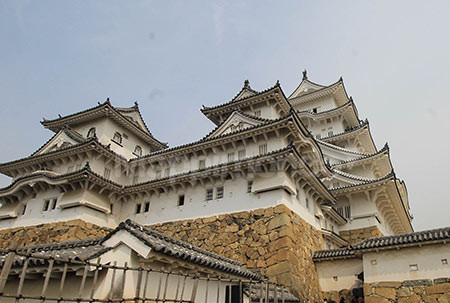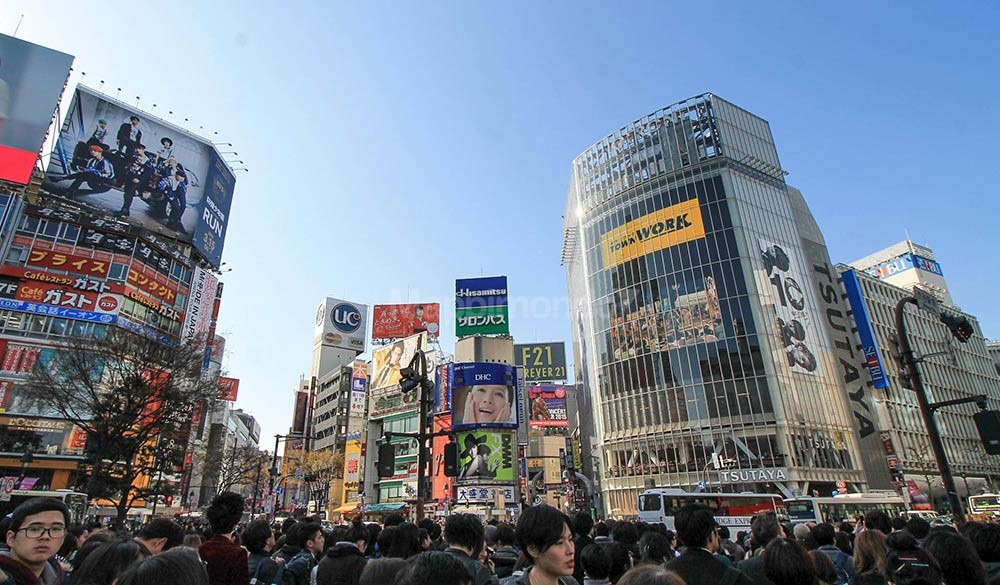If, like me, you have seen The Last Samurai by Edward Zwick, you will have been curious to know the location of the amazing Japanese castle used as its setting.
We are in the city of Himeji, in Kansai, one hour by train from Kyoto, and home to the castle which is universally recognised as the most beautiful castle in the whole of Japan.
Himeji il castello dei samurai


It has survived endless calamities, including wars and devastating earthquakes. And there it stands, intact, just like it was in the Middle Ages, with its embrasures through which hot oil was poured to fight the enemy, and its moats.
I reach it on foot from Himeji train station, and am hit by the splendour of its whiteness, a blinding whiteness on a sunny blue day. It rises up like a true White Egret, or Shirasagi-jo, just like its evocative Japanese name.
It has survived endless calamities, including wars and devastating earthquakes. And there it stands, intact, just like it was in the Middle Ages, with its embrasures through which hot oil was poured to fight the enemy, and its moats.
I reach it on foot from Himeji train station, and am hit by the splendour of its whiteness, a blinding whiteness on a sunny blue day. It rises up like a true White Egret, or Shirasagi-jo, just like its evocative Japanese name.
In 1333 Akamatsu Norimura, a Samurai from the Akamatsu clan, built a fort on the Himeyana hill. A decade later it was dismantled and a castle, which two centuries later became what is now known as Himeji Castle, was built in its place.
 Who were the Samurai?
Who were the Samurai?
The word samurai means to serve. The Samurai were part of the military elite. In the film The Last Samurai, Tom Cruise says: “What does it mean to be a Samurai? It means devoting your body and soul to a series of moral principles”.
The Samurai followed the Bushido, that is a code of honour, which dictated the way of the warrior.
A Samurai learnt strict discipline and self-control thanks to zen meditation. He was a very skilled user of the Katana, the long sword, which symbolised divine strength, and of the wakizashi, the short sword, which he used to end his life with.
 Ritorno al mio racconto, dopo la lunga attesa, attraverso una serie di piccole stradine, entro nel corpo principale del castello, Tenshu, costituito da 5 piani.
Ritorno al mio racconto, dopo la lunga attesa, attraverso una serie di piccole stradine, entro nel corpo principale del castello, Tenshu, costituito da 5 piani.
Back to my story: after a long wait, I walk down some narrow paths, and enter the main body of the castle, Tenshu, and its five floors.
It’s made entirely of wood, but there’s a surprise: it’s completely empty. I can’t believe it. In the land of the space spear, of the rotating laser beam, nothing, emptiness; I’m not asking them to throw components at me as in Jeeg Robot, but at least show me a katana. Nothing! It’s all left to your imagination.
I would have liked to spend time on the different floors but even on your way up everything is kept under control, there are too many people. Never mind! I still managed to come and see it and I wouldn’t have missed it for anything in the world!

Once you leave the Tenshu you can see the wonderful gardens and the Koko-en, that is the Edo style houses of the castle’s Samurai.
Himeji is the one day trip you cannot do without when you visit Japan. It is one of the true testaments of glorious times gone by and of the legendary figures that have made Japan so great in the eyes of people around the world.
Enjoy your trip to Himeji!




